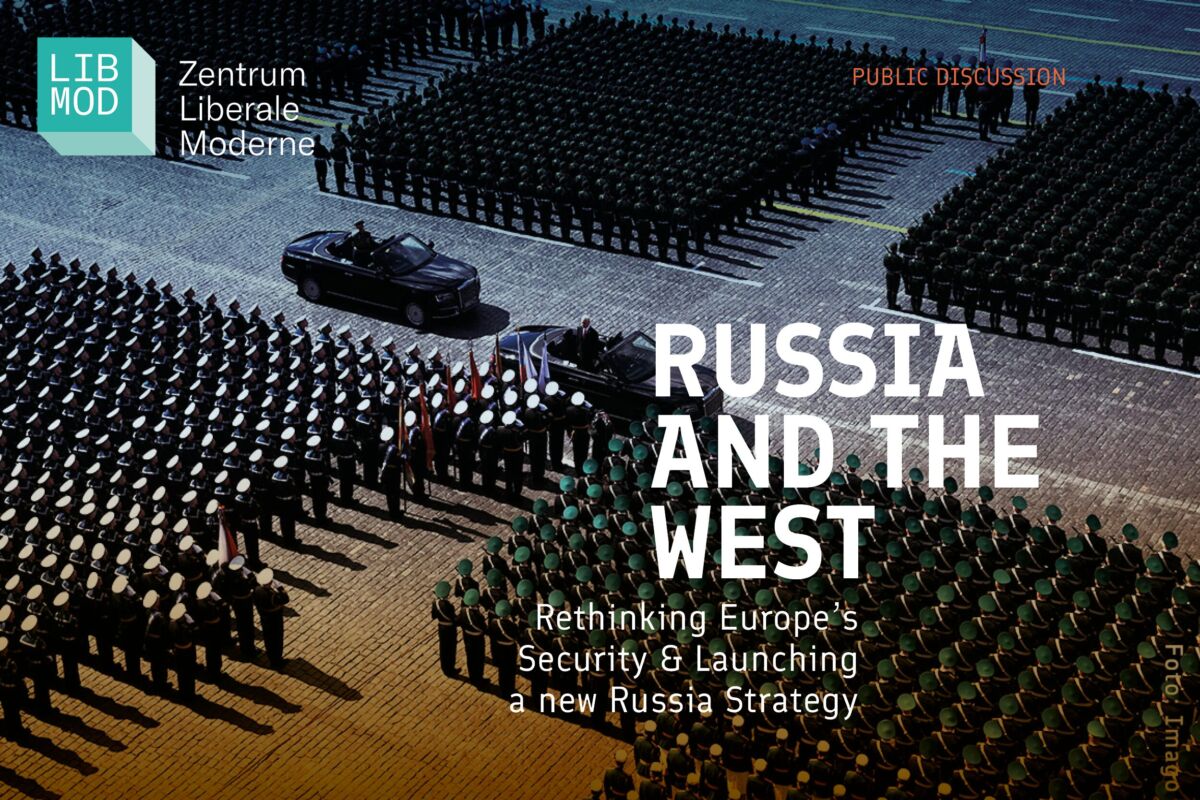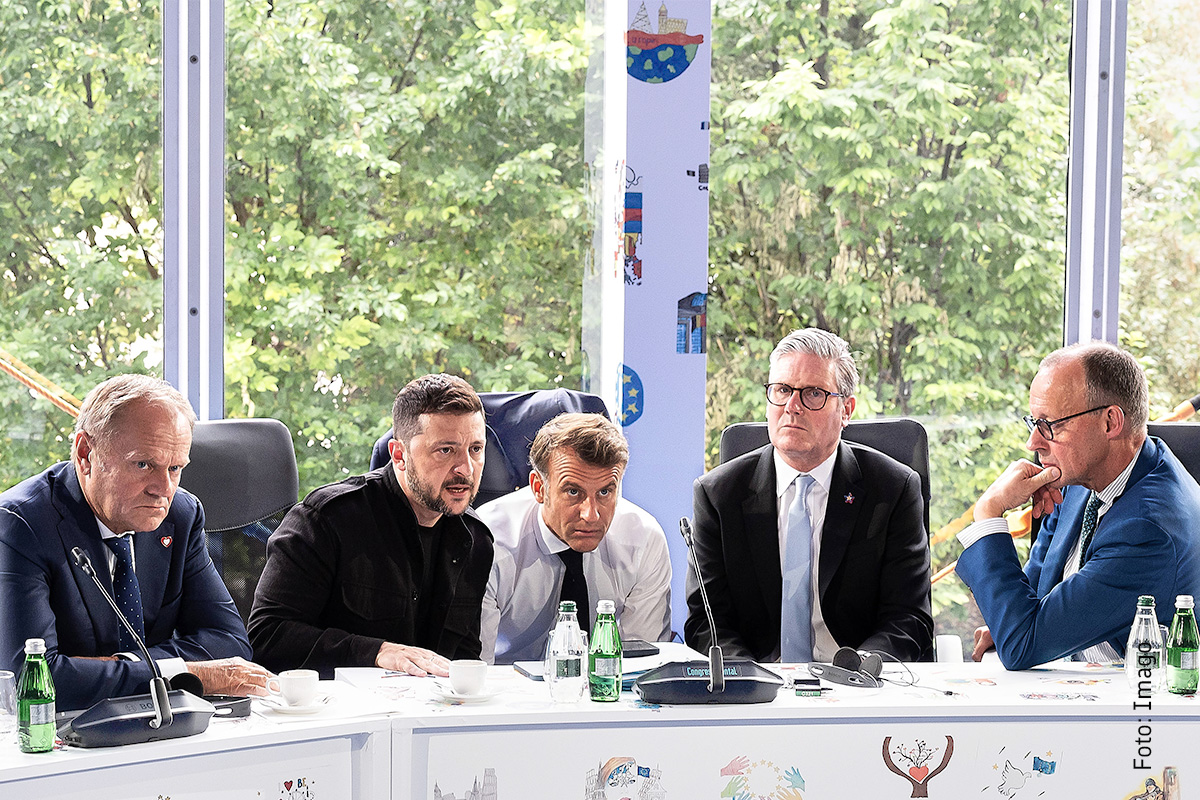Why the Donbas War Was Never “Civil”

In April 2014, Russia began a covert armed invasion of the Ukrainian Donets Basin. However, many politicians, journalists and even some academics still follow the Russian propaganda narrative of an alleged “civil war” in eastern Ukraine at the time. An analysis by Julia Kazdobina, Jakob Hedenskog and Andreas Umland.
Exactly ten years ago, on 12 April 2014, the Russo-Ukrainian War, that had begun with the start of Russia’s illegal occupation of Crimea on 20 February 2014, turned into a large violent armed conflict. Even many of those public commentators who are today sympathetic towards Ukraine and condemn Russia’s large-scale invasion on 24 February 2022 remain ambivalent about its pre-history. Whether because of Russian propaganda, theoretical preconceptions, simple naivety, or other reasons, numerous foreign observers continue to make a sharp distinction between the fighting in Ukraine before and after this date.
How Russia Instigated an East Ukrainian “Rebellion”
The Donbas War was one of several results of a larger Russian attempt to take under control the largely Russophone eastern and southern parts of Ukraine. Initially, the Kremlin intended to do so with as little as possible overt military combat. The best-known part of this largely non-kinetic and mostly covert, yet already comprehensively organized and clearly military operation was Russia’s annexation of Crimea between 20 February and 18 March 2014. The attempt to capture all of what Russian imperial nationalists call Novorossiia (New Russia) included a multitude of other simultaneous subversive, hybrid, clandestine, soft etc. actions designed to undermine social cohesion, political stability and state capacity in eastern and southern Ukraine, and beyond.
Among the most important instruments of Russia’s hybrid war in mainland Ukraine, in early 2014, were Russian mass media as well as Ukrainian media outlets under the influence of Russian or pro-Russian actors in Ukraine. Even so, the effect of Moscow’s demonization campaign on east Ukrainian public opinion remained limited. Not only Russian propaganda channels, but also foreign mass media often portrayed the pro-Russian demonstrations in the Donbas, at that time, as expressions of allegedly widespread popular moods. However, various opinion polls conducted before and during this phase paint a different picture. In March 2014, for instance, still only one-third of the residents of the Donetsk and Luhansk regions supported separation of the Donbas from Ukraine, while 56% rejected this idea. Many of the separatist actions in east and south Ukrainian cities were not only or not at all initiated locally, but instead instigated, directed and financed by Moscow.
How Russian Irregulars Led the Way to Violent Escalation
While tensions were thus already high by early April 2014, large-scale fighting started only in the second week of April. The new stage of confrontation in mid-April featured the use of firearms, and an omnipresence of Russian citizens. This escalation constituted the beginning of the Donbas War as an armed sub-conflict of Russia’s larger war on Ukraine which had started with Russian troop movements in Crimea on 20 February 2014 and lasts until today. The Donbas War begun when, on 12 April, administrative buildings were seized in Sloviansk and Kramatorsk of Donetsk Oblast under the leadership of irregular Russian fighters. The seizure of Sloviansk was followed by the first large-scale fighting of the Russo-Ukrainian War.
The anti-Ukrainian irregulars in Sloviansk were led by the Russian citizen, retired Colonel and former FSB officer Igor Girkin (alias “Strelkov”). Girkin’s armed group of 5o+ irregular fighters had just arrived in mainland Ukraine – via Russia – from the already occupied Crimea where most of these men had participated in the annexation operation. Girkin’s group played a decisive role in the transformation of the Donbas regional civil conflict into a delegated inter-state war between Russia and Ukraine. In an interview for the Russian far-right weekly Zavtra (Tomorrow) in November 2014, Girkin admitted: “I pulled the trigger for the war. If our [armed] unit had not crossed the border [from Russia into Ukraine], everything would have turned out the way it did in [northeastern Ukraine’s] Kharkiv and [southern Ukraine’s] Odesa. [...] [T]he impetus for the war, which is still going on today, was given by our [armed] unit. We shuffled all the cards that were on the table. All of them!”
How Ukraine’s So-Called “Separatists” Were Guided by Moscow
On 13 April, Acting Ukrainian President Oleksandr Turchynov announced the start of a so-called anti-terrorist operation (ATO). The Ukrainian government’s initial decision to launch the defensive operation as an anti-terrorist rather than a military one – despite evidence from the start of deep Russian involvement in Sloviansk and Kramatorsk – is sometimes also interpreted as evidence for an intra-state rather than international conflict. Yet, this decision was made on pragmatic rather thanparadigmatic grounds mainly because the prevention of separatism is covered by Ukraine’s counter-terrorism legislation rather than defence-related laws. Kyiv was, in April 2014, unwilling to announce martial law ahead of the presidential elections which were scheduled for May 2014 and would have had to be cancelled under a state of emergency.
Several deep scholarly investigations of the pre-history, outbreak and course of the Donbas War have disclosed and analyzed multiple connections between seemingly independent irregular anti-Ukrainian actors in eastern Ukraine, on the one side, and Russian state organs, whether in Moscow, Rostov-on-Don, Simferopol or elsewhere, on the other. The Germany-based Russian historian Nikolay Mitrokhin was among the first prominent academics to point, in an article called “Transnational Provocation”, to the crucial role not only of Russian irregular actors, but also of the Russian state in the outbreak of the putatively civil Donbas War. Later on, the Japanese political scientist Sanshiro Hosaka with his articles, e.g. “Russian Political Technology in the Donbas War,” and German researcher Jakob Hauter with his book Russia’s Overlooked Invasion, among other analysts, confirmed and supported Mitrokhin’s early indications.
Already before the appearance of detailed empirical investigations into the involvement of the Russian state, the latter factor appeared as the most plausible explanation for the outbreak of the war. The larger political context of the military escalation in Donbas in spring 2014 was, from its start, suggestive. It could have hardly been a coincidence that war had been in the making and eventually broke out during the same period when regular Russian troops were capturing Crimea and when Russia was accelerating a multidirectional hybrid attack against mainland Ukraine. A strange aspect of the seeming “rebellion” in the Donbas was always that, from the beginning to its end, it never included any well-known political or other leaders or relevant political or other organizations from the region.
How Russian Regular Forces Intervened in the Donbas War
Until today, Russia vehemently denies that its regular troops were actively involved in the conduct of the Donbas War on the ground. This was indeed largely the case until late August 2014. Yet, there were – apart from the crucial role of Russian regular troops in the annexation of Crimea in February-March 2014 — a number of instances in dryland Ukraine indicating the presence of not only irregular but also regular Russian soldiers.
The most infamous such exception was the crew of a Buk TELAR self-propelled, surface-to-air missile system of the Russian Air Defence forces which entered east Ukrainian territory for a couple of days in July 2014, and shot accidentally down the Malaysian Airlines passenger flight MH-17 which was, with 298 civilians on board, flying over the Donbas. At the same time during which smaller Russian regular detachments like the Buk unit supported the pro-Russian irregulars fighting in Donbas, the Russian army started shooting across the border on Ukrainian troops. During July 2014, a number of rocket and artillery attacks on Ukrainian positions from Russian territory were captured on both photos and videos. The first such attack occurred on 11 July 2014 near the village of Zelenopillya in Luhansk Oblast, resulting in the deaths of 30 Ukrainian soldiers and border guards. In a report published in December 2016, the famous OSINT group Bellingcat described Russian shelling of Ukraine on at least 149 separate occasions.
During the following month, Russia eventually invaded mainland Ukraine on a large scale. On August 14, 2014, a large column of, at least, two dozen armoured personnel carriers and other vehicles of the Russian army crossed the Russian-Ukrainian border. This was the first massive intrusion of Russian regular forces into mainland Ukraine confirmed by independent observers. By late August 2014, up to eight regular so-called “battalion tactical groups” (BTGs) of Russia’s armed forces had been deployed to the territory of Ukraine, with over 6,000 personnel.
Conclusion: Setting the Narrative Straight
Nevertheless, many politicians, journalists, diplomats and even some scholars across the globe still follow, when commenting these events, the Kremlin’s propaganda narrative on the Donbas War for the last 10 years. Media, political, academic, civic, and other commentators should make sure to get the origins and nature of the war right. Politicians, diplomats, and other actors interested in Ukraine’s future should explicitly and continuously emphasize in their public and non-public statements that the armed conflict in the Donbas in 2014–2022 was a delegated inter-state war between Russia-Ukraine and not an inner-Ukrainian civil war.
Julia Kazdobina is a Senior Fellow at the Security Studies Program of the Foreign Policy Council “Ukrainian Prism” in Kyiv, and Jakob Hedenskog as well as Andreas Umland are Analysts at the Stockholm Center for Eastern European Studies at the Swedish Institute of International Affairs. This article is based on a SCEEUS report.
![]()
Did you like this article? If yes, you can support the independent editorial work and journalism of LibMod via a simple donation tool.
Donate via PayPal
![]()
We are recognized as a non-profit organization, accordingly donations are tax deductible. For a donation receipt (necessary for an amount over 200 EUR), please send your address data to finanzen@libmod.de
Related topics
order Newsletter
Stay tuned with our regular newsletter about all our relevant subjects.





